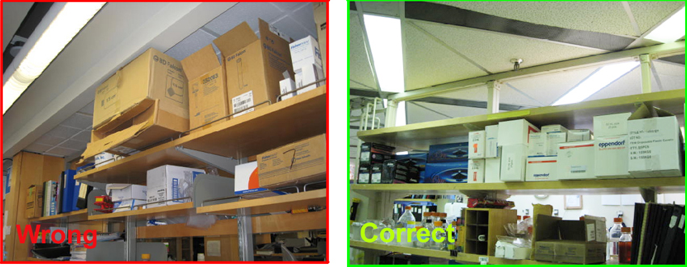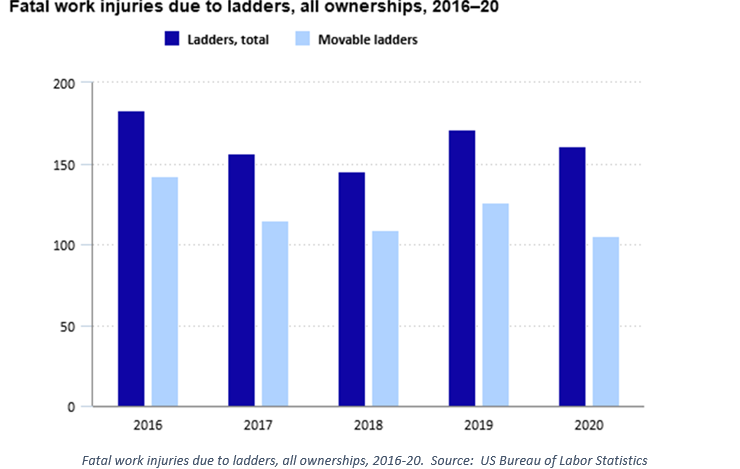Environmental Health & Safety from the Director's Desk
|
|
|
|
Greetings everyone,
Welcome to our quarterly newsletter. We have an exciting second quarter with some opportunities for the labs.
First, Environmental Health and Safety (EHS) has acquired a special disposal opportunity for those troublesome schedule drugs that you may have inherited as part of your lab space or had acquired but were unable to use or consume in your lab experiments. Amnesty days will be coming to your campus in the near future, beginning with the marine campus in early May. Keep an eye on your email to learn of times and dates near you.
Second, EHS will be hosting our first ever Laboratory Safety Awareness week. This year, each day from May 20 to May 24, you will have the opportunity to Zoom in during lunch time to get to know your safety team better, gather some safety tips, and have an opportunity to win a one of kind University of Miami branded Laboratory Research Notebook—compliments of your safety team. One of the attendees from each lunch and learn session will be selected at random as a winner of a lab notebook. We look forward to seeing you!
Warm regards,
Jennifer Laine, DrPH
Executive Director, EHS
|
|
|

|
Managing Aging Hazardous Chemicals in Laboratories
Laboratories are like time capsules, preserving scientific knowledge and experiments across generations. But what about the chemicals lurking in those dusty corners? How long can we keep them around before they turn into relics or, worse, hidden dangers? Picture a blue liquid in a flask marked "important" from the '80s or '90s. The label's faded, but it still looks cool. When should we let it go?
Here are five suggestions for managing the viable lifespan of the chemicals in your inventory:
- Not Looking so Good: If your chemicals appear contaminated or degraded, seem to have lost their chemical integrity, or have gained new characteristics like crust formation or crystallization, it is time to discard them. This includes chemicals with a limited shelf life, particularly those that can form peroxides or polymerize on their own. If a moisture-absorbing chemical has absorbed water or if its container is not sealed properly, it is time to dispose of it. If containers are bulging, collapsing or corroding, these are also signs that it is time to transfer the items to the Hazmat team.
- Check the Dates: Chemicals should have an expiration date. If it does and we have passed it up, it is time for disposal. If it doesn't appear to have one, the date is missing or is unreadable, then you can reach out to the supplier for guidance. They can help you set a new expiration date for 6-12 months after verification. Document the new date, and your chemicals are good to go. If the supplier says to dispose of them, then it is best practice to comply with that recommendation.
- Five-Year Rule: Even with no expiration date, some suppliers suggest discarding chemicals after five years because over time they deteriorate.
- Unused: Some chemicals are just sitting there, not being used at all. There is often a reluctance to part with these items. If you are not using them, best practice is to clear them out. Make room and move on.
- Research Leftovers: Do you have a shelf, cabinet or other space where you are keeping the chemicals, equipment or old supplies that were in the lab when you moved in? If so, and you have never or rarely used these items, it’s time to take another look at whether they should remain. Most likely it is time to send them on their way.
In short, think carefully about keeping chemicals in your lab. If you are not using them and they are risky or highly hazardous, it is better to have less. Say goodbye to old flasks, anything over five years, "just-in-case" chemicals, dusty bottles, and old experiments. Dispose of them and make way for new work.
If you have any questions or would like a consultation, please contact Adrian Hernandez Ferrer.
|
|
|
Ceiling Clearances and Storage Rule
Ceiling clearances and storage play a crucial role in fire safety within buildings. The following guidelines ensure that stored items are appropriately positioned in relation to the ceiling, allowing for effective firefighting measures and minimizing fire hazards:
- Non-Sprinkled Areas: In buildings without automatic sprinkler systems, storage should be maintained at least 2 feet below the ceiling. This clearance allows for fire department hose streams to reach the ceiling if needed.
- Sprinkled Areas: In buildings equipped with automatic sprinkler systems, the clearance between the deflector (the part of the sprinkler head that sprays water) and the top of storage should be 18 inches or more throughout the horizontal plane.
|
|
|

|
|
Remember, these guidelines aim to enhance fire safety by ensuring proper storage distances from ceilings.
Are your ceilings compliant with our storage guidelines?
If there are any questions on these requirements, please contact Christine Daley.
|
|
|
|
Proper Disposal of Empty Containers
Getting rid of containers that have not been adequately prepared for disposal can lead to service disruptions and compliance issues.
Most empty containers can be disposed of as regular waste, if you follow these conditions:
- Ensure they are empty by pouring, pumping, or aspirating so that less than 1 inch or 3% by weight of the capacity remains.
- Remove or deface the labels using a marker.
- Take off the caps, leaving the containers open.
- Place the containers in the garbage for removal.
|
|
|
|
Lab of the Year Award Winners
The Lab of the Year Awards were re-established in 2023, with award winners announced during the Biosafety Month annual webinar. One award is granted for each of the three University of Miami campuses: Coral Gables, Medical, and Marine. Here are last year's award winners:
2023 Lab of the Year Award for the Coral Gables Campus: Dr. Katlyn Meier Lab
|
|
|
|
2023 Lab of the Year Award for the UHealth Campus: Immunology & Histocompatibility Lab overseen by Dr. Phillip Ruiz
|
|
|
|
2023 Lab of the Year Award for the Marine Campus: Dr. Amanda Oehlert Lab
|
|
|

|
|
Congratulations and thank you for your continued commitment to safety!
Research that Requires Committee Oversight
As a reminder, there are several committees at the University of Miami that provide oversight on different areas of research in accordance with the relevant regulations. Failing to obtain approvals prior to the initiation of research can result in severe penalties including bans on research, inability to publish work, expensive fines, and even the risk of the University losing its federal funding.
Three of the most common committees are the Institutional Biosafety Committee (IBC), the Institutional Animal Care and Use Committee (IACUC), and the Institutional Review Board (IRB). For those conducting work with recombinant or synthetic nucleic acid molecules, that work must be submitted to IBC. For those conducting work with animals, that work must be submitted to the IACUC. For those conducting work with human research participants or identifiable samples from humans must submit a protocol to the IRB. For guidance or questions on these entities or related research, please contact those offices.
If there are any questions on these requirements, please contact us at biosafety@miami.edu.
|
|
|
|
Navigating the Hazards: A Candid look at Ladder Safety
It is often said that ladders are among the most common tools we encounter. Available in a myriad of forms, both portable and stationary, ladders are so widely used that there is often a disregard for the potential risks they carry when not handled properly.
According to the American National Standard Institute (ANSI), ladder mishaps cause over 300 fatalities and prompt more than 130,000 visits to the emergency room across the country annually.
While fatalities linked to ladder use at work have seen a slight decline, the latest data from the Bureau of Labor Statistics (2020) indicate that nonfatal injuries from ladders that result in time off work have remained steady. In 2020 there were 22,710 such injuries with the ladder being the main cause. Specifically, the installation, maintenance, and repair sectors recorded 5,790 ladder-related injuries.
|
|
|

|
|
Selecting the right ladder involves several considerations to ensure safety and efficiency. Here is a guide from the American Ladder Institute to help you choose the appropriate ladder for your needs:
- Material: Choose a ladder material suitable for your work environment. Avoid metal ladders if you are working near electricity, as they conduct electricity. Fiberglass ladders are non-conductive and durable, making them a good choice for electrical work.
- Length: Ensure the ladder is neither too long nor too short for the intended task. For step ladders, avoid standing on the top cap or the step below it. For extension ladders, the top three rungs should not be used for climbing.
- Duty Rating: Check the ladder’s duty rating, which indicates the maximum weight it can safely support. This includes your weight, clothing, protective equipment, and any tools or supplies you are carrying.
- Environment: Consider the physical environment where the ladder will be used. Ensure the ladder will rest on an even surface and that there are no obstructions in the path of the climb.
- Inspection: Before each use, inspect the ladder for damage such as worn non-slip feet, loose screws, damaged rungs, or if its label is missing, damaged or unreadable. Should any of these conditions exist, do not use the ladder.
- Ladder Type: There are several types of ladders, each designed for specific tasks. Evaluate your work requirements to determine whether you need a step ladder, extension ladder, or another type.
|
|
|

|
|
Ladders have labels! Read the label to ensure that the ladder you are using is of the appropriate Type, Grade and Maximum Weight Allowed Rating and has either the ANSI A14.2 compliance sign on the ID label for stepladders or the ANSI A14.5 for extension ladders. Remember to also factor in the weight of the user.
Here's a guide to decoding ladder labels:
|
|
|
|
If the label is missing, damaged or unreadable, you should opt out of using the ladder. At that point, you may want to replace the ladder if it is old or damaged. The other option is to reach out to the manufacturer. Manufacturers should be able to replace a missing, damaged, or unreadable label upon request.
|
|
|
|
In summary, here is a quick guide for safely using ladders:
|
|
|
|
Finally, training is not only essential but required if your job involves using a ladder. Please contact Noelia Estevez De Rosario for the next scheduled Ladder Safety Training.
|
|
|
|